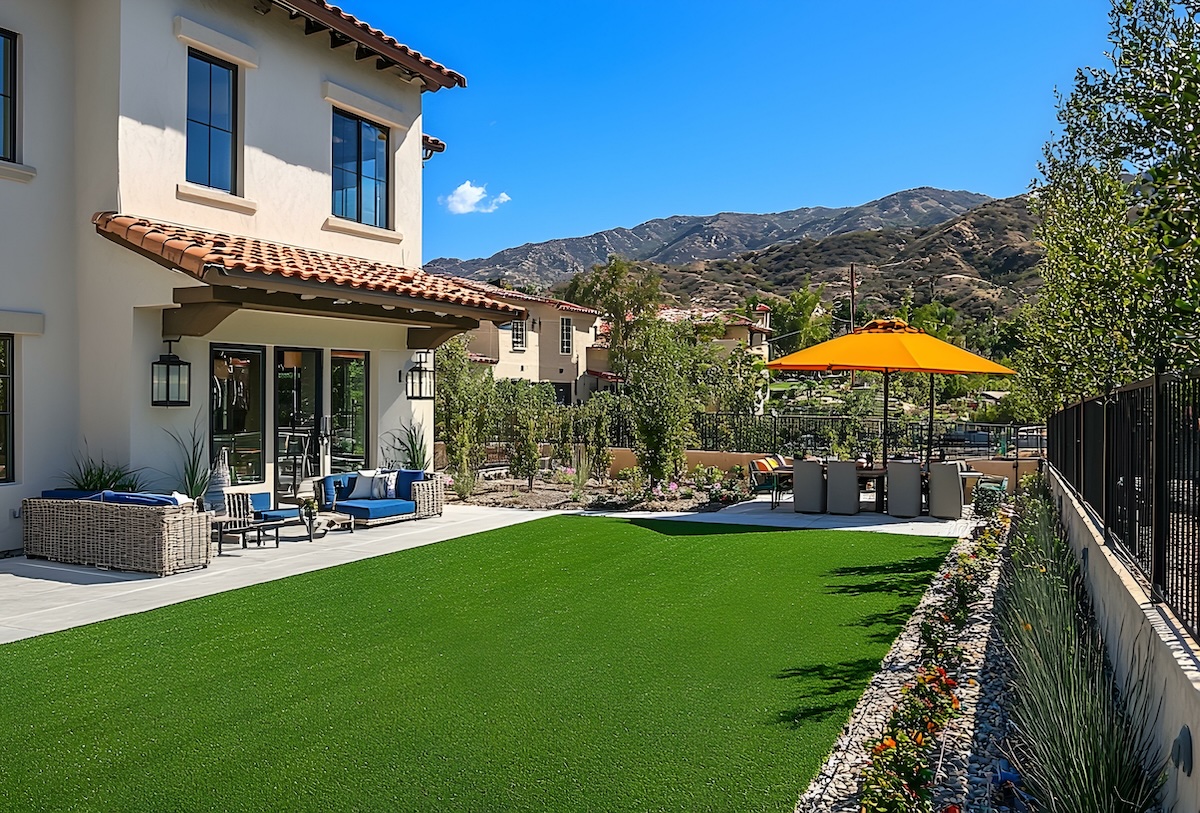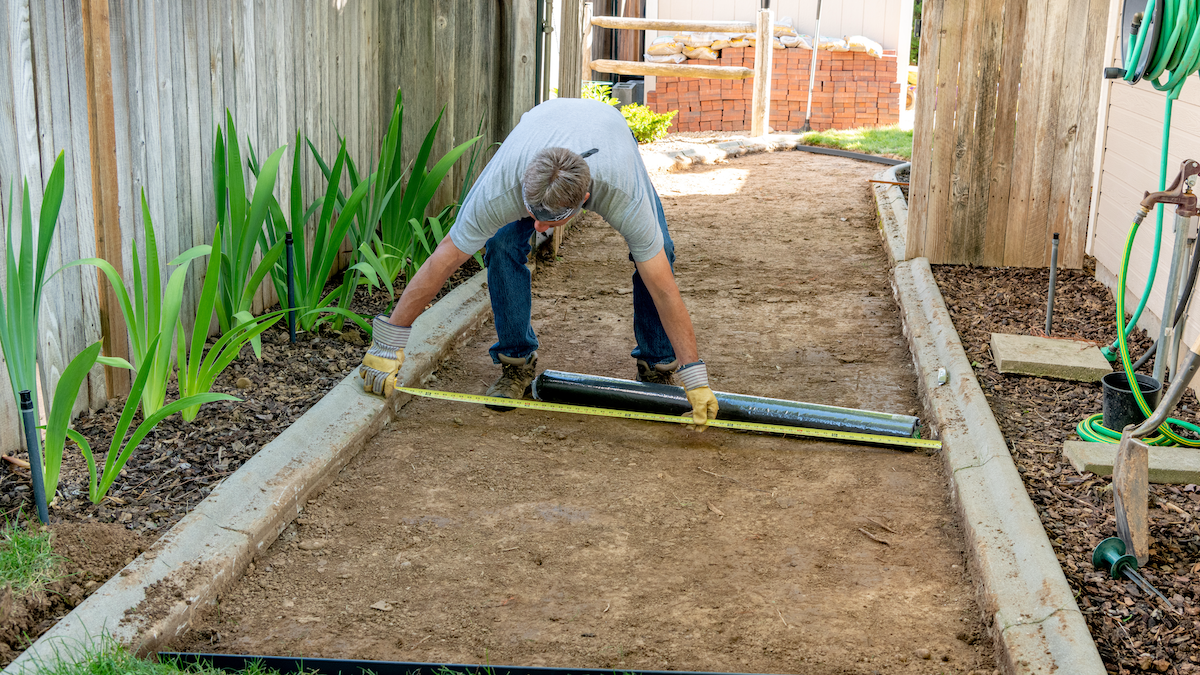Last Updated on September 25, 2025 by ReTurf
Artificial turf, or false grass, is no longer just a sports-field material; it has become a practical surface for home landscapes, commercial spaces, and pet-friendly areas. This kind of synthetic grass provides year-round greenery without the heavy maintenance that natural lawns demand, and installations can handle everything from backyard play to high-traffic footpaths. With interest growing in so many settings, one question consistently comes up: when is the best time to install it? Mid-autumn is often praised for its balance of soil warmth and cooler air, yet every season has its advantages worth weighing.
Why Mid-Autumn Is So Often Recommended
Mid-autumn tends to be a sweet spot in much of North America. The soil is still warm enough to handle easily, but the peak heat of summer has faded. Installers like this season because ground temperatures are steady, which makes for easier grading, compacting, and seam work. Cooler days mean crews can work longer hours without battling heat stress, and the turf adhesives set more consistently. For homeowners, autumn installation often means the new surface has months to settle before heavy spring or summer use begins.
Another subtle advantage lies in landscaping logistics. By autumn, most plants have slowed their growth, so digging edges or reshaping beds around a new turf area causes less shock to surrounding greenery. If irrigation adjustments or drainage tweaks are needed, you are less likely to disrupt an active growing cycle.
What Winter Brings to the Table
Winter installation is less common, but not impossible. In many southern or coastal climates where the ground never truly freezes, crews can lay turf year-round. The perk of a winter project is scheduling. Many contractors have fewer jobs booked in cold months, so availability is higher and lead times shorter. Pricing sometimes reflects that seasonal lull as well.
However, working with frozen or overly wet ground creates challenges. Frozen soil cannot be properly leveled or compacted, and excessive rain can undermine sub-base stability. If your region has a mild winter, this season may actually be a quiet, efficient window to install false grass with minimal disruption to your property’s use.
Spring as a Season of Renewal
Spring is when many people naturally think about yard upgrades. The weather is warming, daylight is expanding, and contractors are gearing up for a busy season. Installing turf in spring provides immediate benefits: children and pets can use the space during the most active months, and the lush green look sets a vibrant backdrop for outdoor gatherings.
The main caution with spring projects is contractor demand. Because so many homeowners plan renovations at this time, scheduling can be competitive. If your turf project requires significant grading, drainage correction, or demolition of old surfaces, spring’s frequent rains may complicate preparation. Still, once installed, you have an entire season to enjoy the results.

The Heat and Hustle of Summer
Summer installation is certainly possible, and in regions with short winters, it might even be the most practical choice. Long days allow extended work hours, and dry ground is easier to excavate and compact. Contractors are in full swing, and supply lines for turf and infill tend to be well stocked.
Yet the disadvantages are real. High heat accelerates adhesive curing, which can reduce bond strength if not managed carefully. Crews working in direct sunlight need frequent breaks, sometimes stretching a job over more days. For homeowners, the main downside is losing part of your summer lawn season while the work is underway.
Regional Considerations That Matter More Than the Calendar
Beyond broad seasonal patterns, local factors strongly influence timing. For instance:
- Soil conditions: Clay-heavy ground holds water and freezes harder, while sandy soil drains quickly and can be prepped more flexibly.
- Rainfall cycles: In places with monsoon-like summers or wet springs, autumn may truly be the best window.
- Temperature swings: Areas with extreme summer heat require careful planning to avoid damage to turf backing or adhesive seams.
- Contractor availability: Some regions see high construction demand tied to tourism or school schedules, which may affect when installers can realistically fit you in.
Understanding these details often makes the difference between a straightforward installation and one filled with delays.
Practical Tips for Timing Any Project
- Plan around your own household use. If your yard is heavily used in summer, consider an off-season install.
- Talk to contractors about their busiest months. An early booking often secures better dates and steadier pricing.
- Evaluate ground conditions before you commit. If you notice standing water, frozen soil, or heavy root systems, solve those issues first.
- Remember that false grass is less sensitive than live sod. Unlike natural grass that must root immediately, artificial turf can be laid whenever conditions allow proper sub-base work.
Choosing the Right Time Matters More Than the Calendar
There is no single universal answer to when artificial turf should be installed. Mid-autumn often aligns with ideal working conditions across many regions, which explains its reputation as the “best” season. Yet winter can offer easier scheduling, spring creates immediate curb appeal, and summer provides long days and dry ground. Each season has legitimate strengths that can be leveraged depending on local climate, contractor availability, and your own project timeline.
A thoughtful approach focuses less on the calendar and more on preparation. Ensuring the base is stable, the drainage is correct, and the ground is workable will do more for long-term performance than choosing one season over another. If you are ready to start your own installation, explore our inventory of reclaimed turf, new rolls, and specialty pieces to find the right fit for your project. Get the turf from ReTURF.



